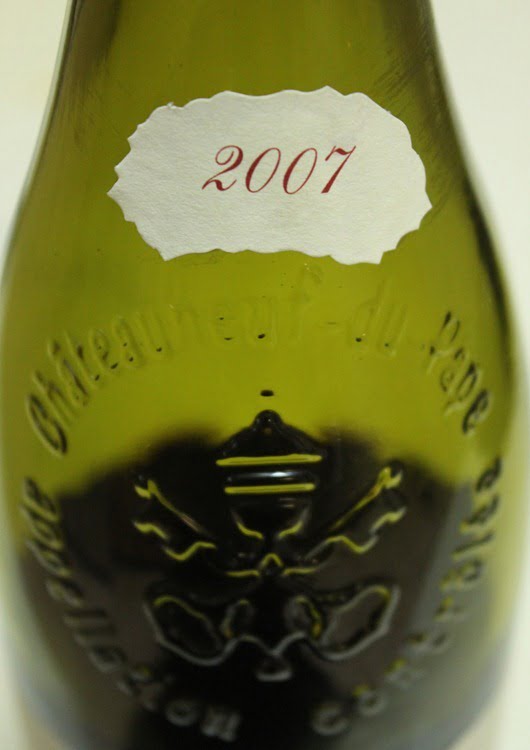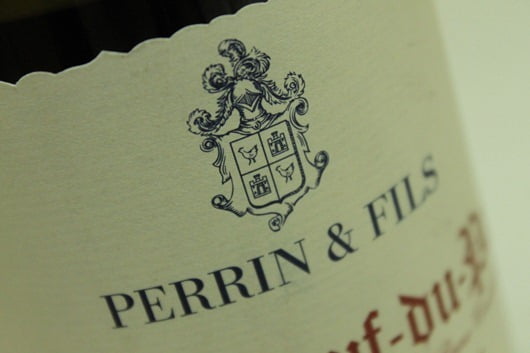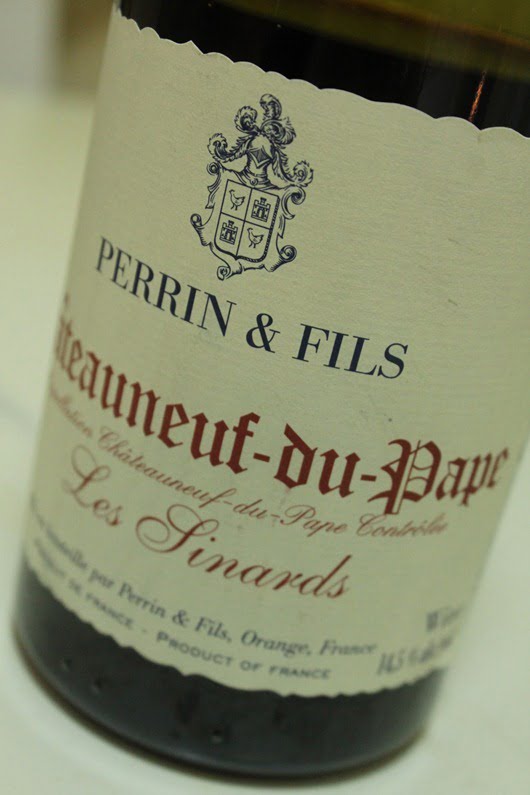Perrin & Fils “Les Sinards”Chateauneuf-du-Pape, Rhone, France, 2007
December 17, 2011
Grape
70% Grenache, 15% Syrah, 15% Mourvedre
Facts
- I do have to say, I’ve always had an affinity for Chateauneuf-du-Pape, even before I started really getting into wine. Maybe it’s because, for some reason, I deemed it to be my first “serious” bottle of vino.
I’ve always thought of Chateauneuf to be almost stuck in time. Whereas most other wine regions of the world have seen at least a partial amount of modernization; whether it be their winemaking practices, or the way they label/market their wines, Chateauneuf seem to pay no attention. They rely on the same medieval-style italic fonts, family crests, and embossed wine bottles that they’ve been using for decades. I have a good degree of respect for them for that! Though, with that being said, let’s see what happens once the Millenial’s start dominating the wine buying market… - Perrin & Fils are a legend in the Rhone region of France, and are also the owners of the famous Chateau de Beaucastel estate (also a Chateauneuf-du-Pape). The reins of the winery have been passed through multiple generations.
- The Perrin & Fils “Les Sinards” Chateauneuf-du-Pape is a certified organic wine. Don’t expect to find any mention of that on either the front or back label. To most European winemakers, it isn’t big deal. They’re not doing anything special. They’re just making wine the way they always have!
- The “Les Sinards” received 92 points by Robert Parker, and 90 points by the Wine Speculator (of which I always have to preface by saying….if you care…).
- Since Chateau Beaucastel Chateauneuf (the flagship of Perrin) is on the pricey side (usually $80+, depending on the vintage), the “Les Sinards” is a nice way wallet-friendly way to taste wine from the same winemaking family. All wines bearing the Perrin & Fils name are always of solid quality, even their sub-$20 retail Cote du Rhone’s.

 Place (click map for larger view)
Place (click map for larger view)
-
Wines from the Rhone don’t enjoy the prestige (and price tag) of Bordeaux, but if I had to choose, I’d go Rhone every time!
-
Chateauneuf-du-Pape vineyards are filled with what the French call "Galets". These huge stones which are scattered in and amongst the vines retain the heat of the day and radiate it to the vines during the night.
-
There are 13 grape varieties approved for use in Chateauneuf-du-Pape red wines, and even though they’re only using three grapes in this blend, their Chateau Beaucastel does use all 13, namely: Mourvedre, Grenache, Syrah, Cinsault, Vacarese, Counoise, Terret Noir, Clairette, Muscardin, Picpoul, Picardin, Bourboulenc and Roussanne.
-
Perrin & Fils pride themselves on making wines which are the truest expression of the grape and the terrior, and take a very minimal interventionist approach toward their winemaking.

Taste
Actually lighter in body that I expected, rough still fairly rough and rugged, in true Chateauneuf style. Spicy blackcurrant, plum, and raspberry. Accented by dense and dominant notes of tea, wet earth, dried herbs, and licorice stick. Nowhere near as “big” as other Chateauneuf’s I’ve tasted, though you could quite easily put 10 years on this wine, and it wouldn’t bat an eyelid.
Pairing
Old school wine, old school food! Game, lamb shank, mushrooms, truffle roasted/braised meats, duck, stew/casserole, black pudding, and beef in just about every form.
Price
$40
Since I’ve been receiving daily phone calls from people looking to buy wine from me, I probably need to mention that I don’t actually sell wine. The price listed above is what I see as being the average retail price. I do enjoy chatting to everyone though! :)











